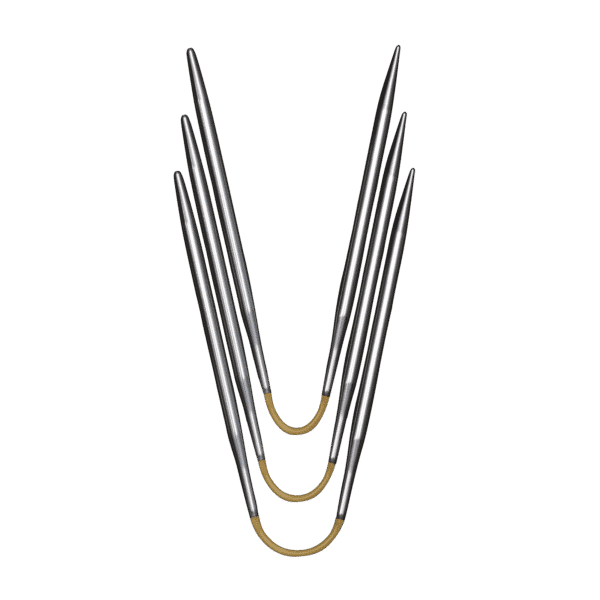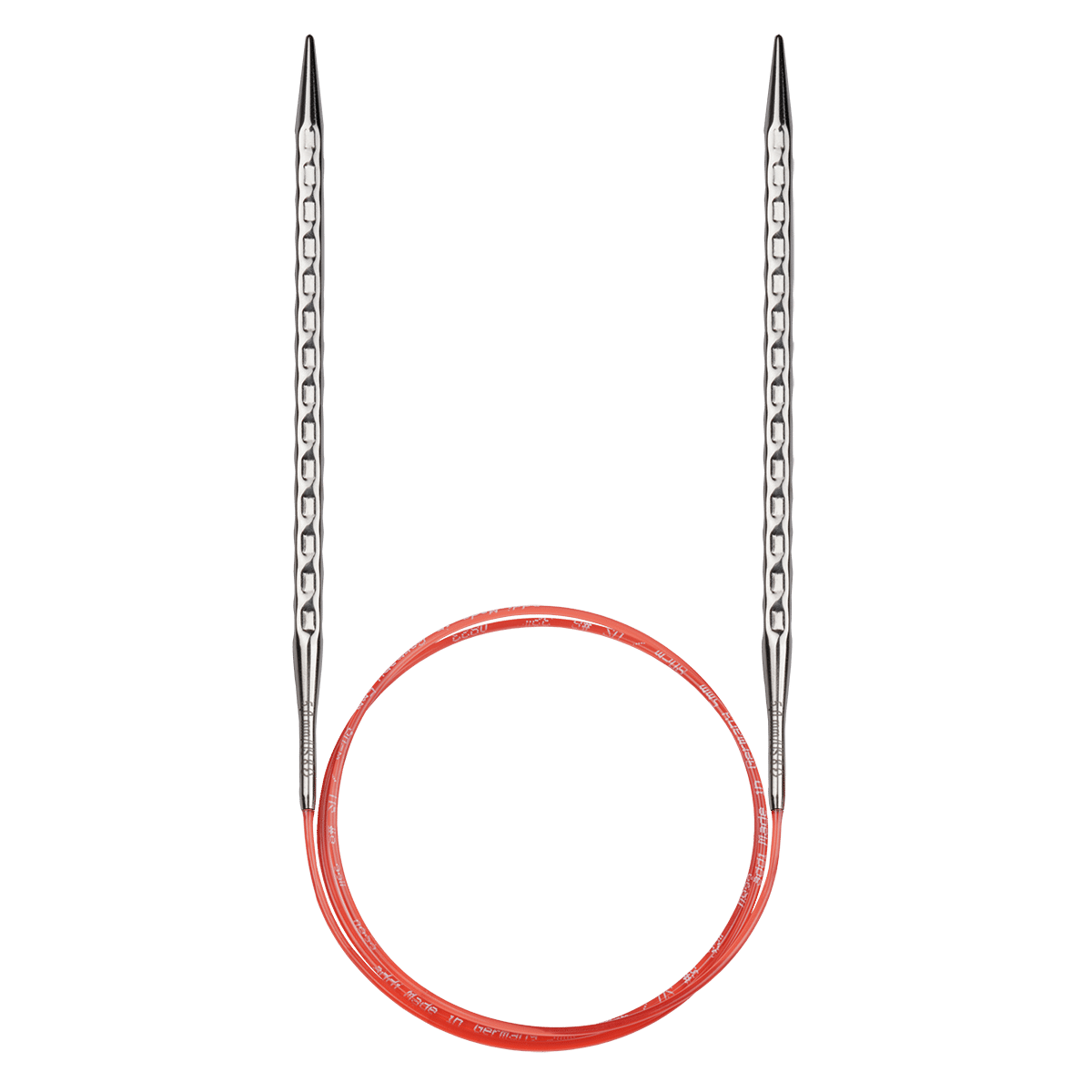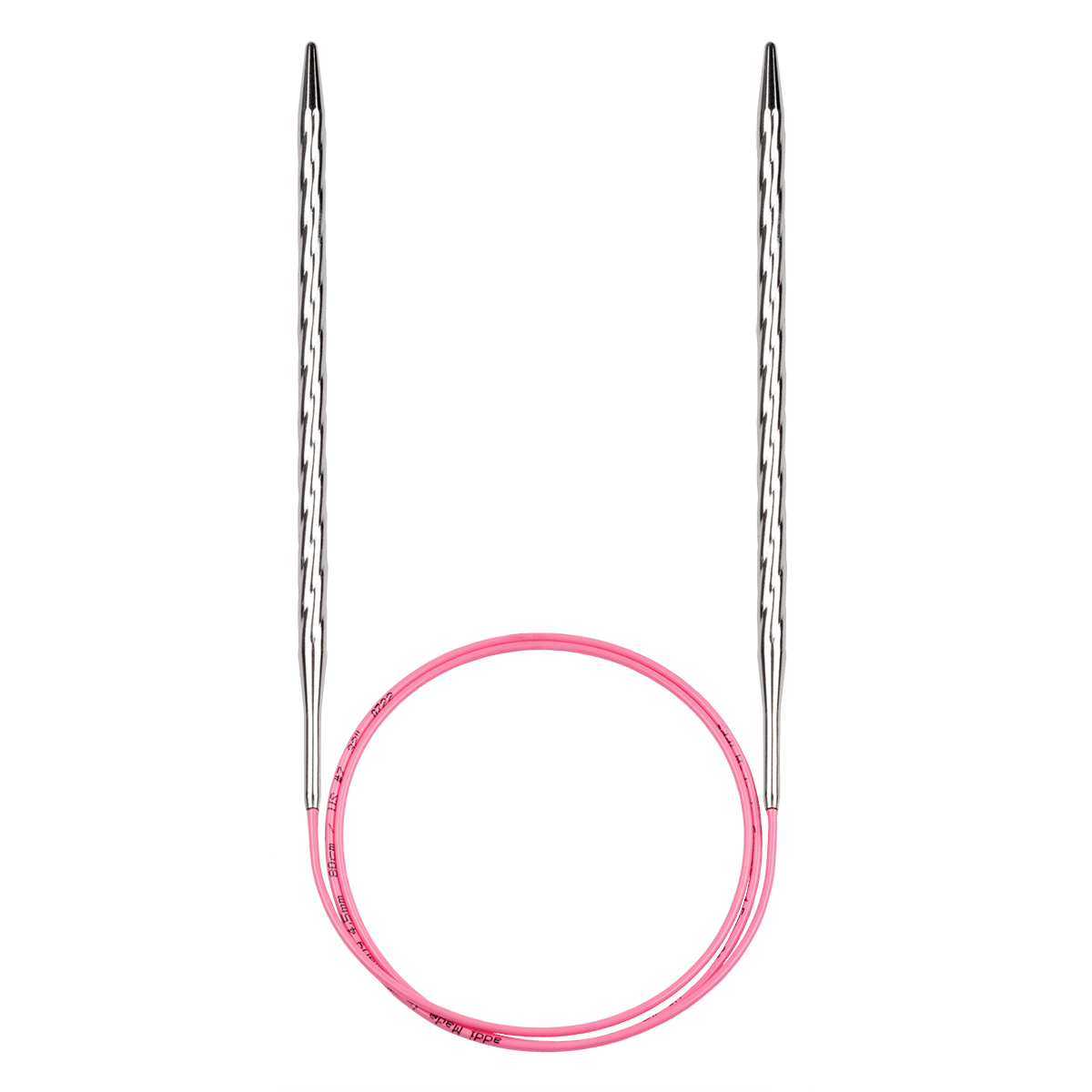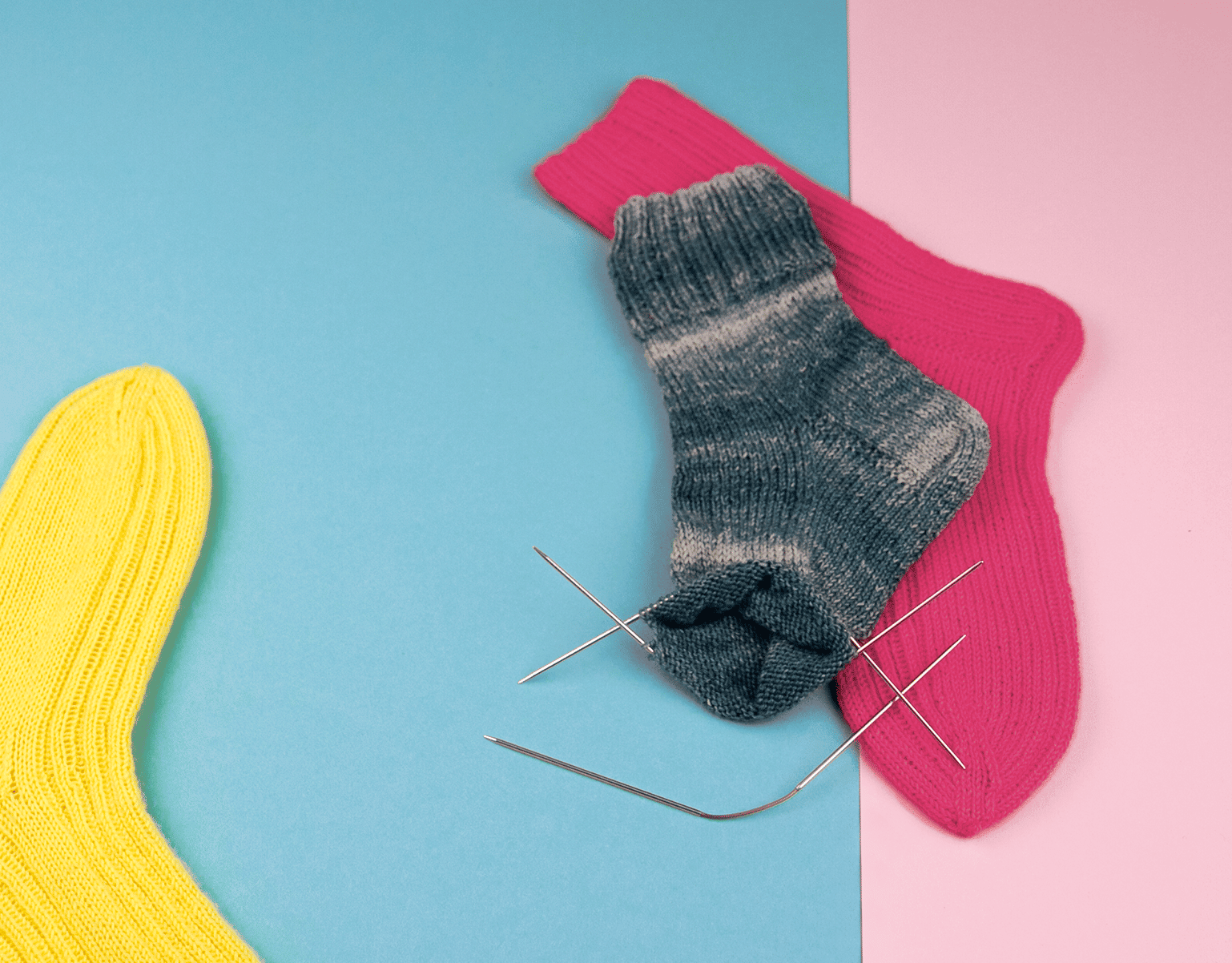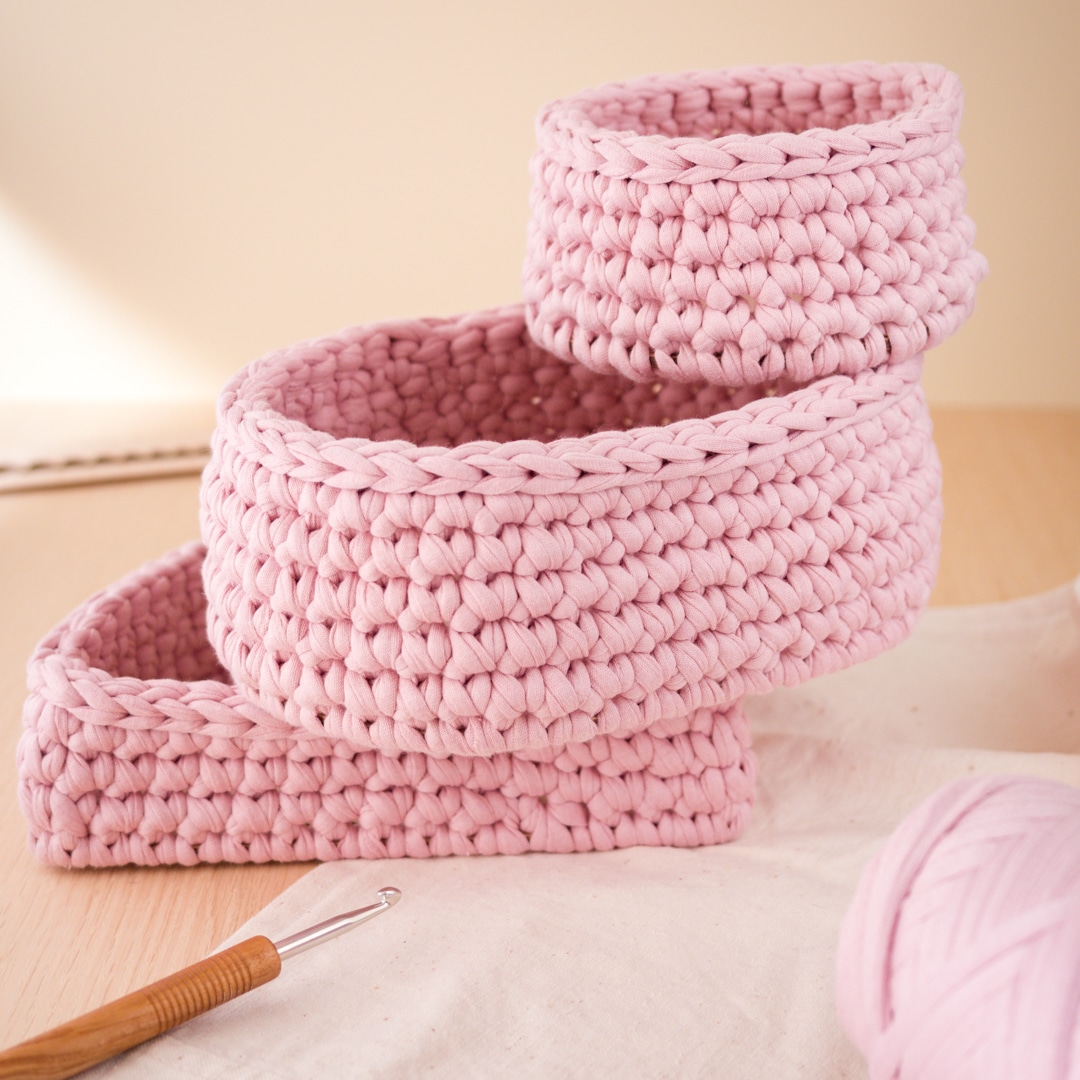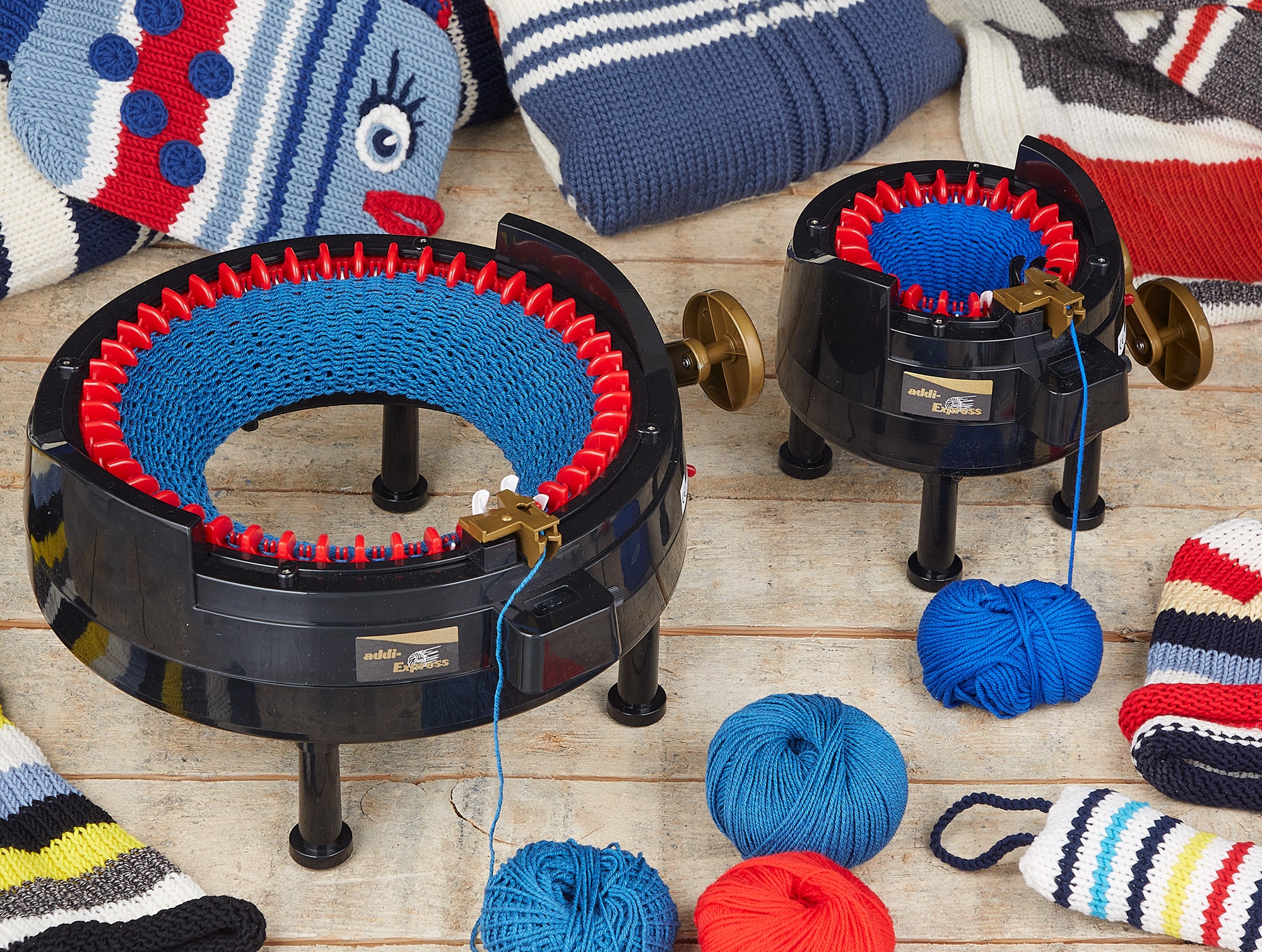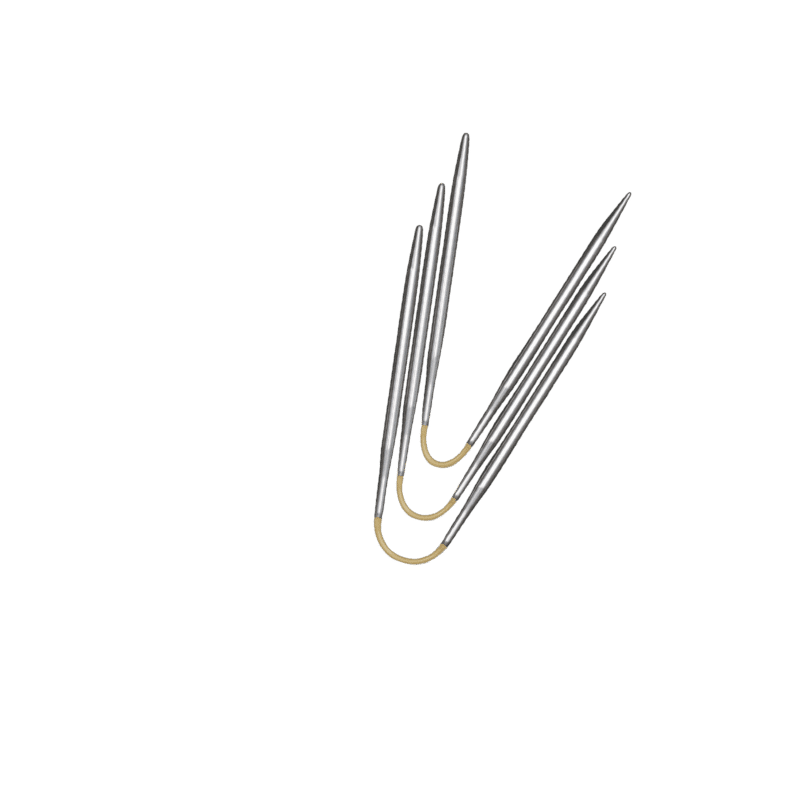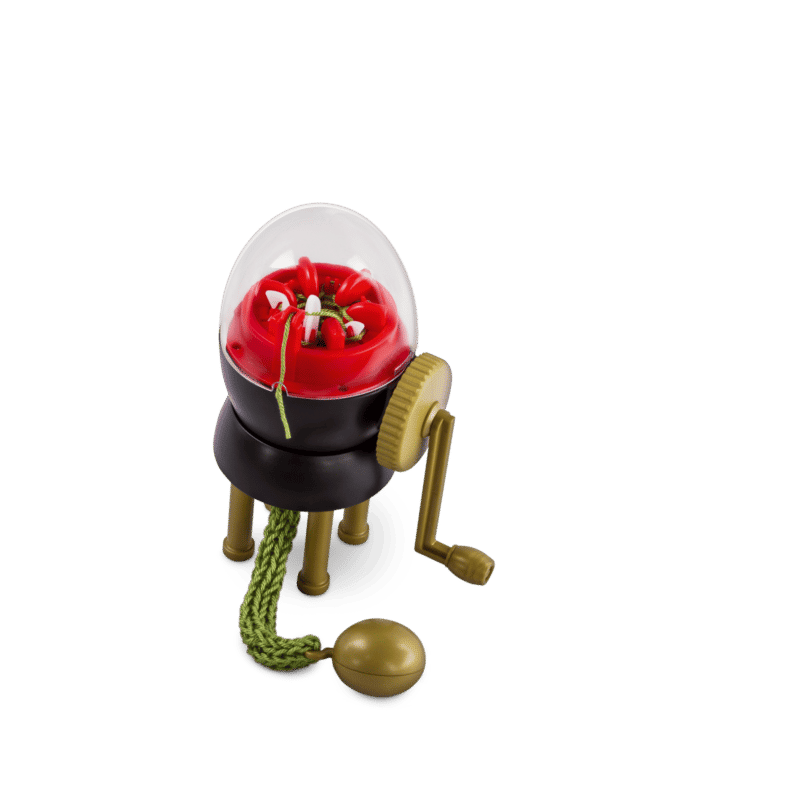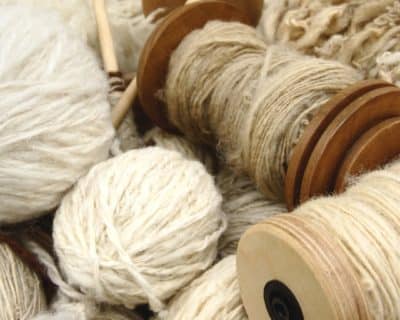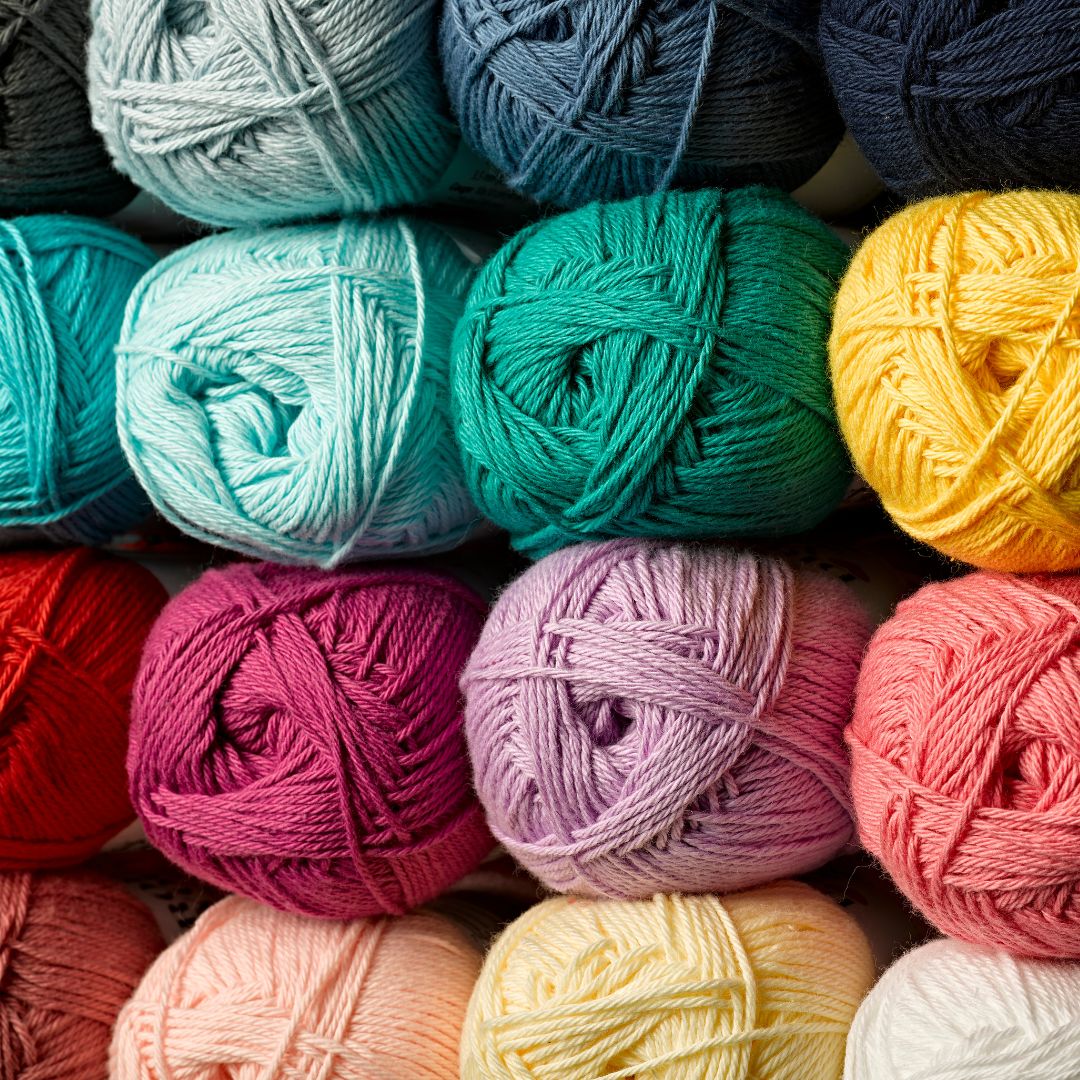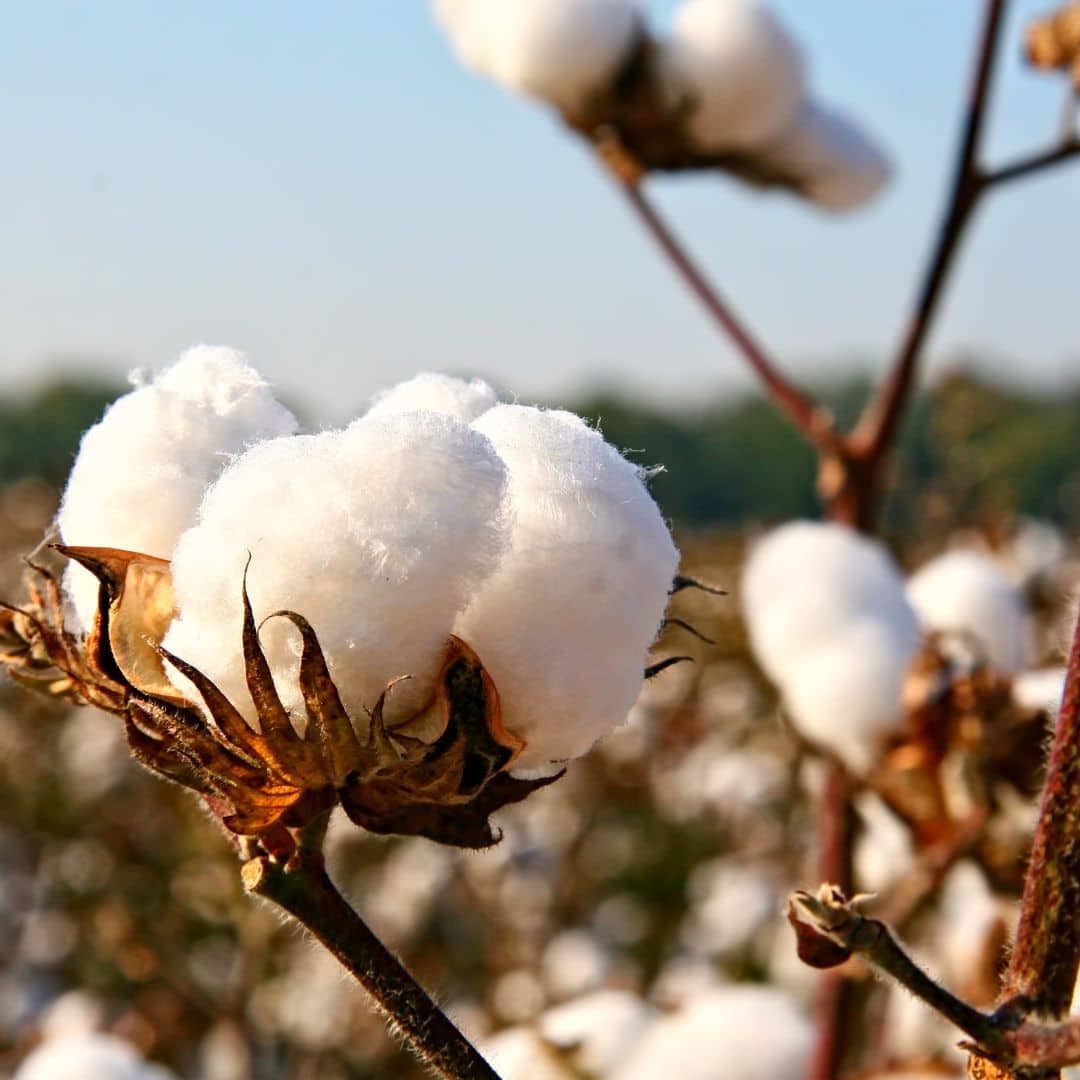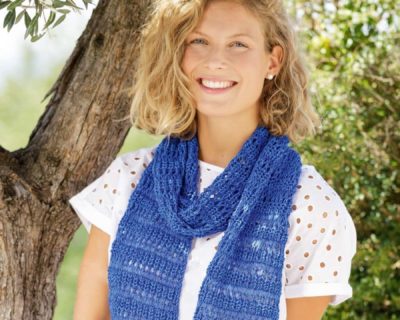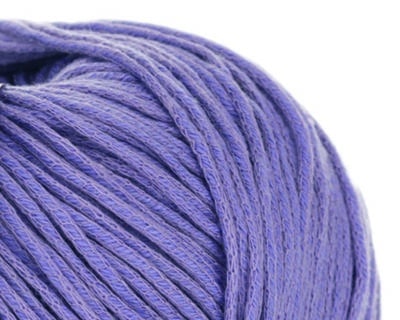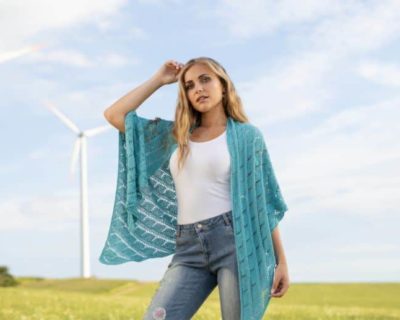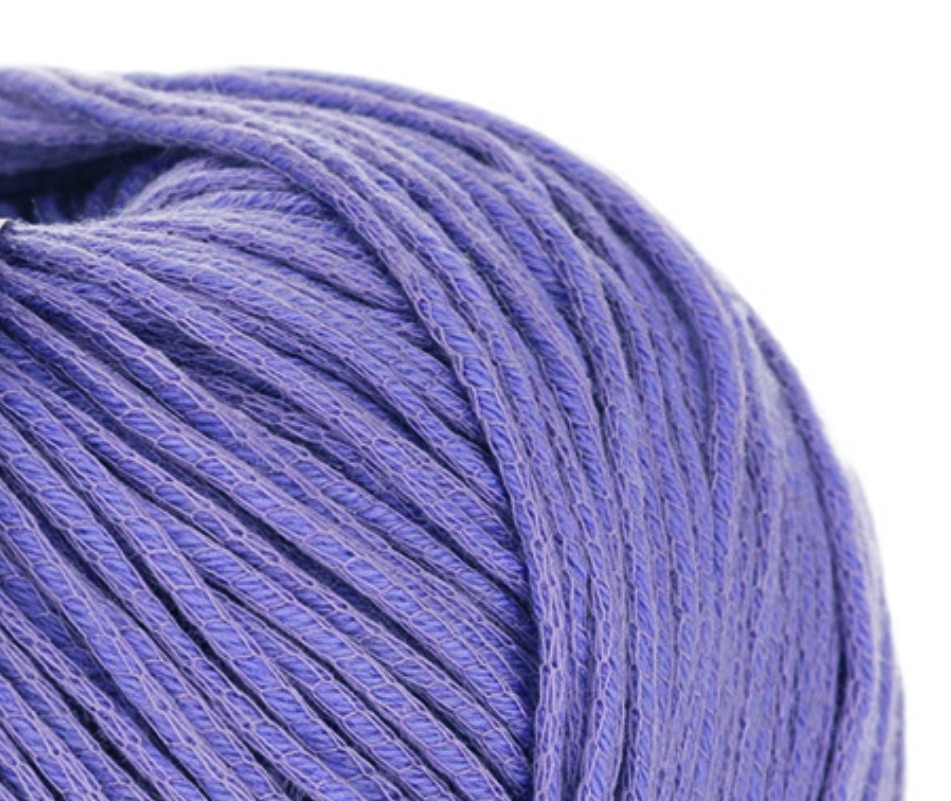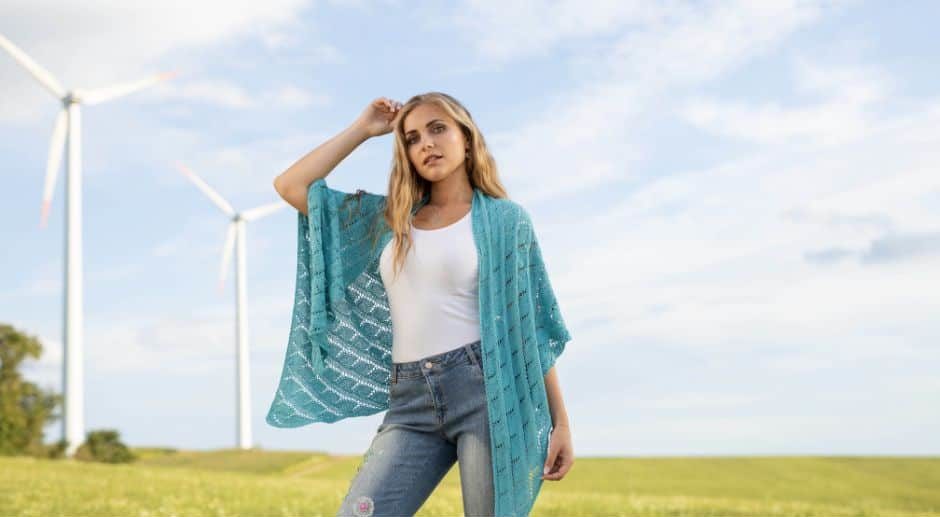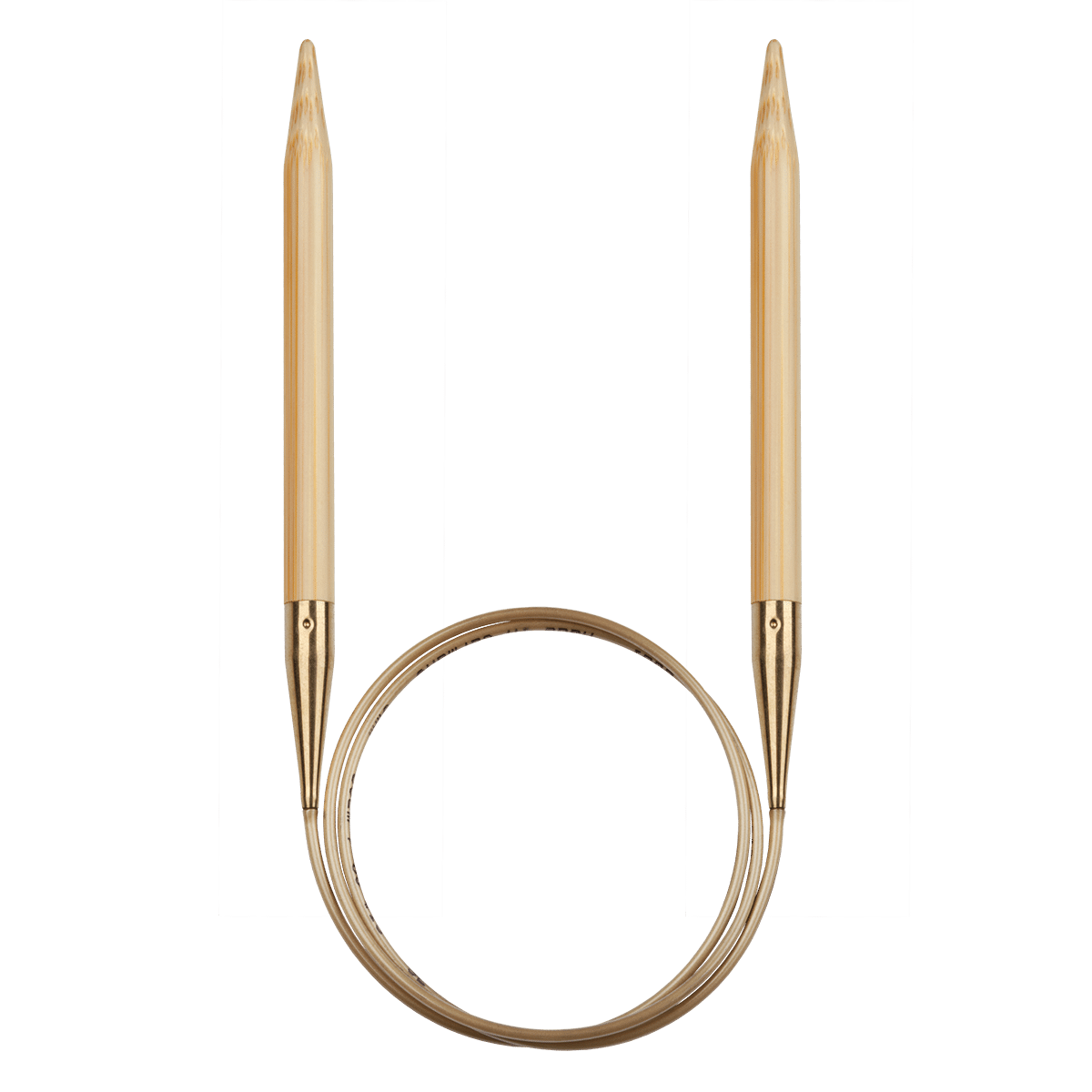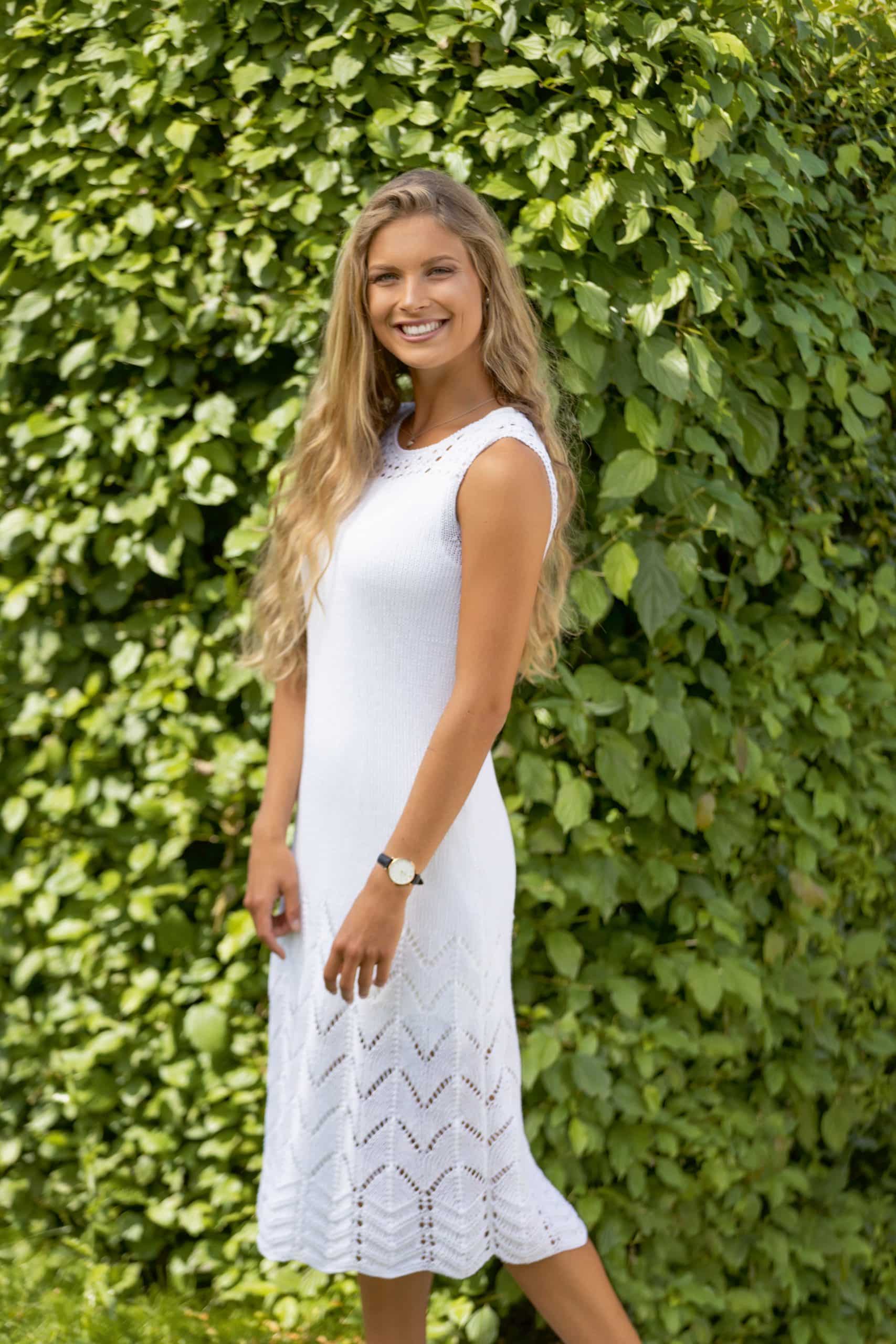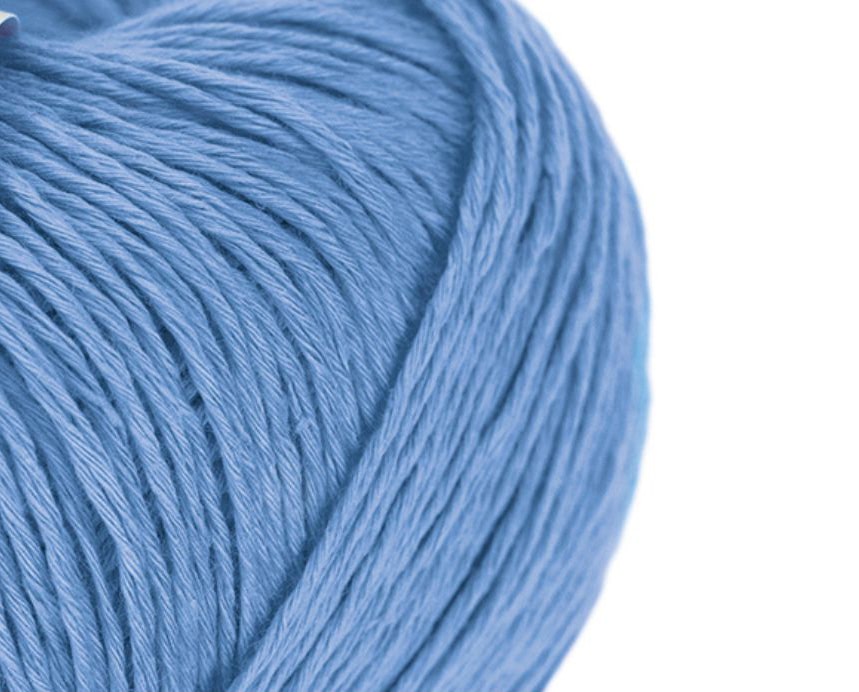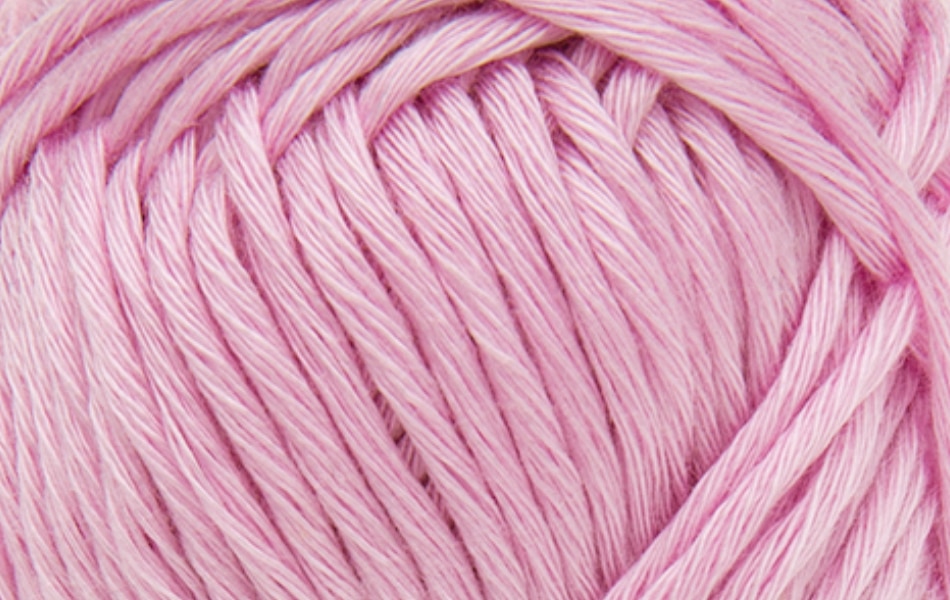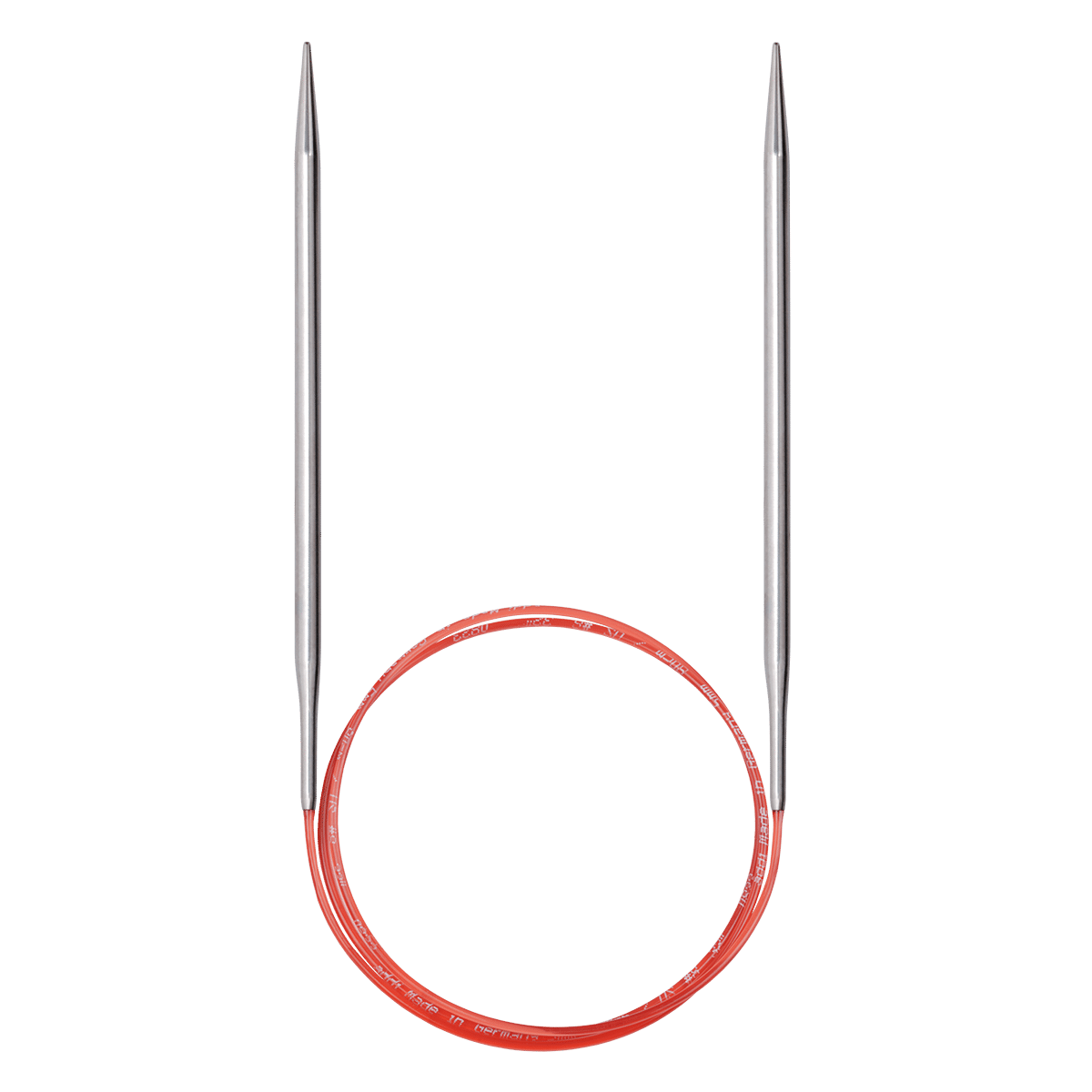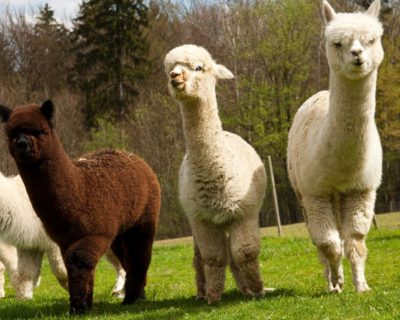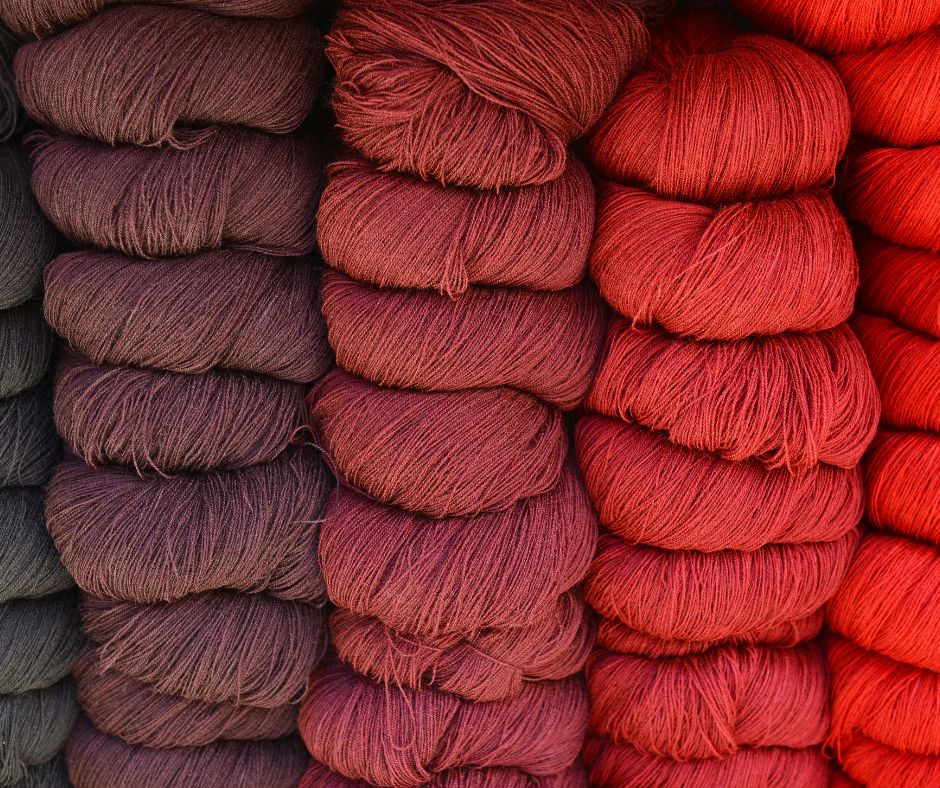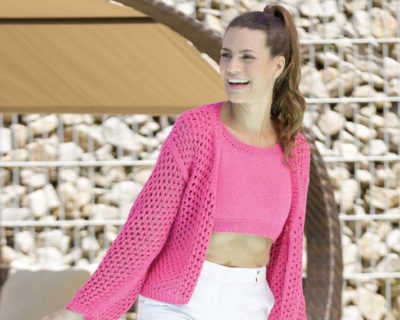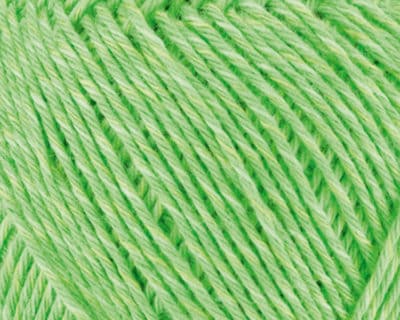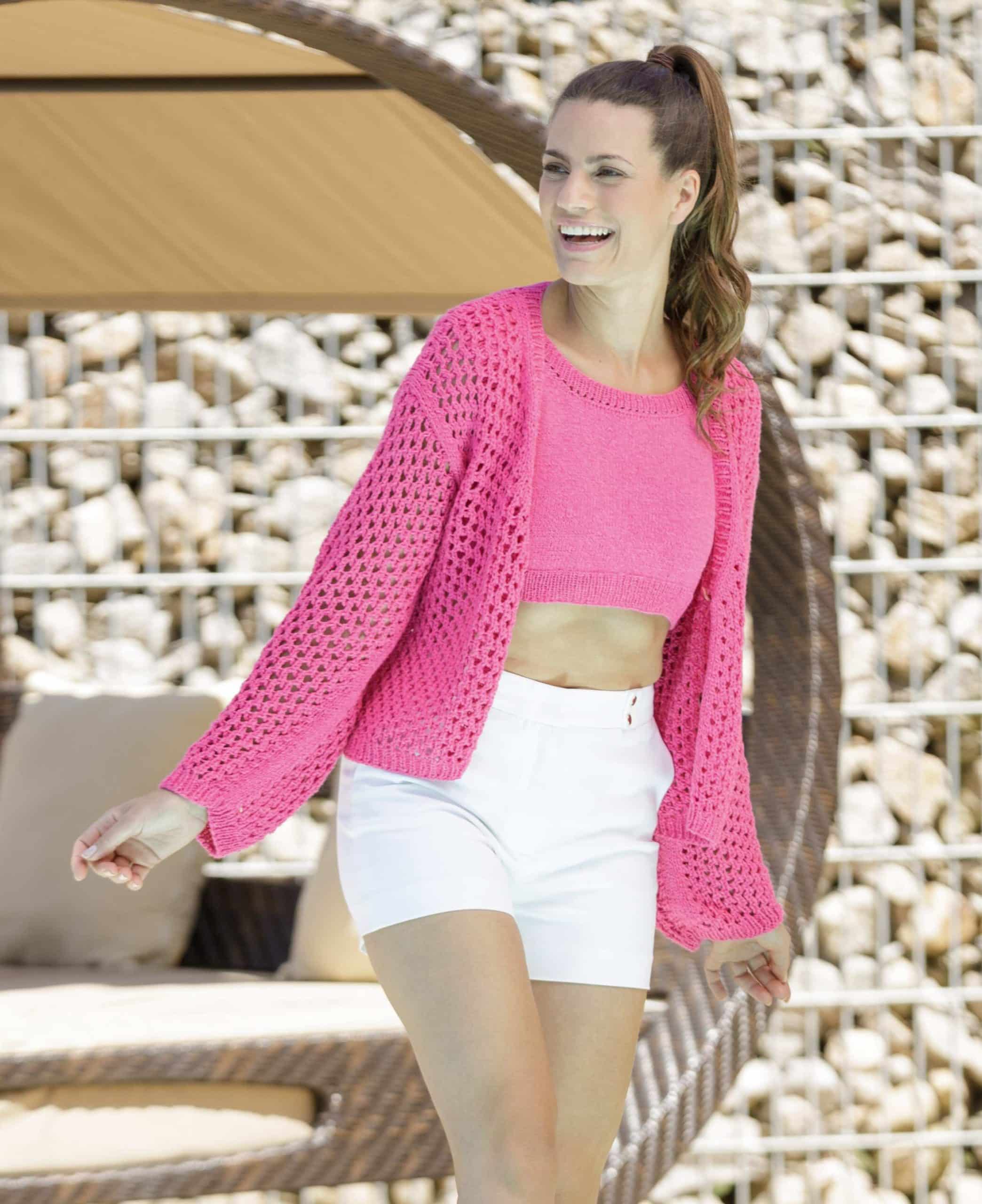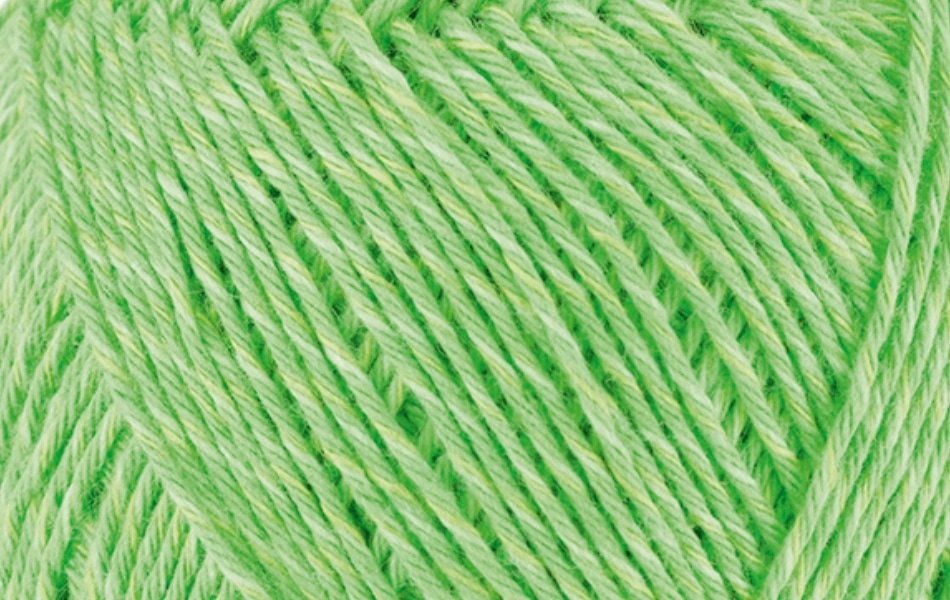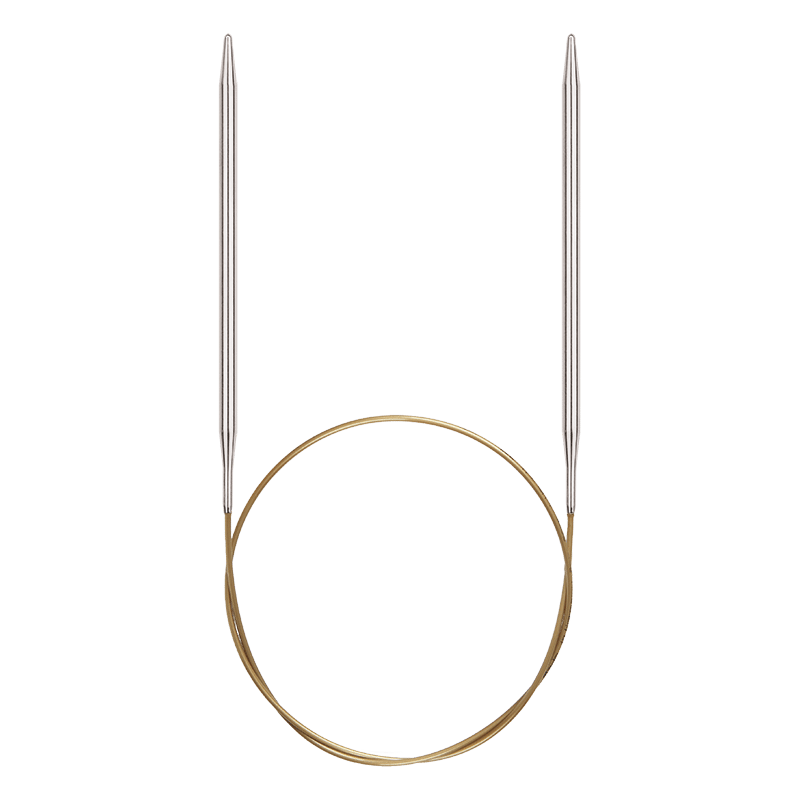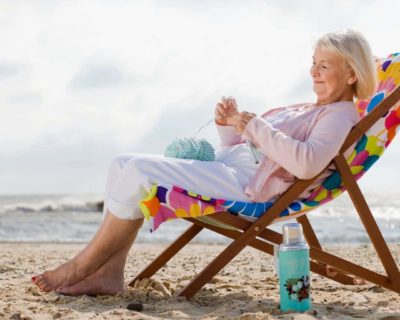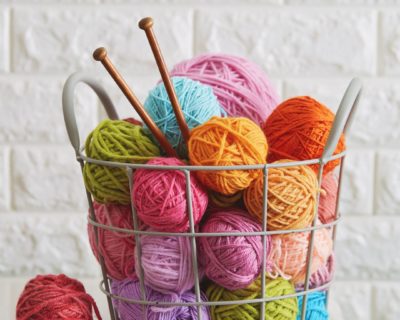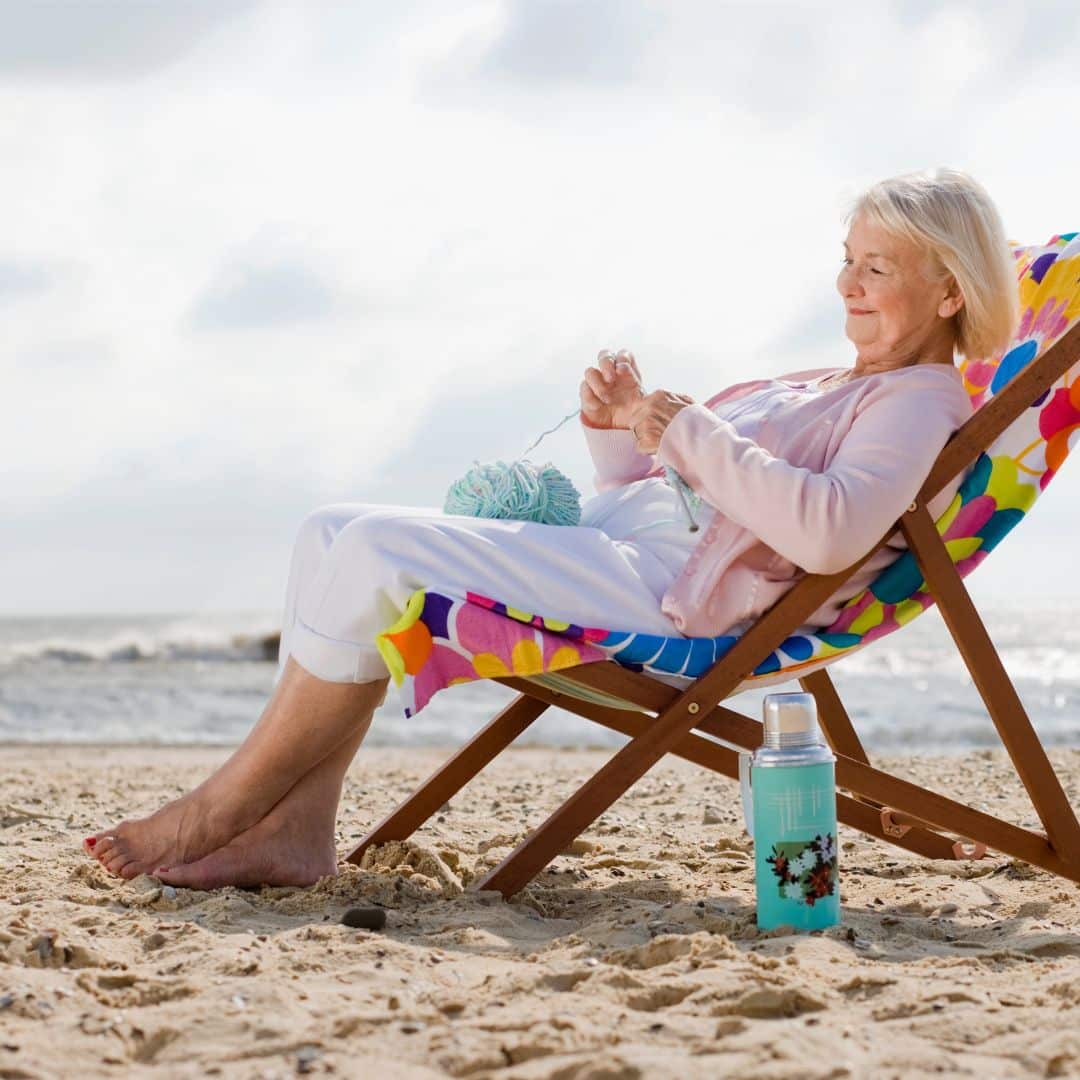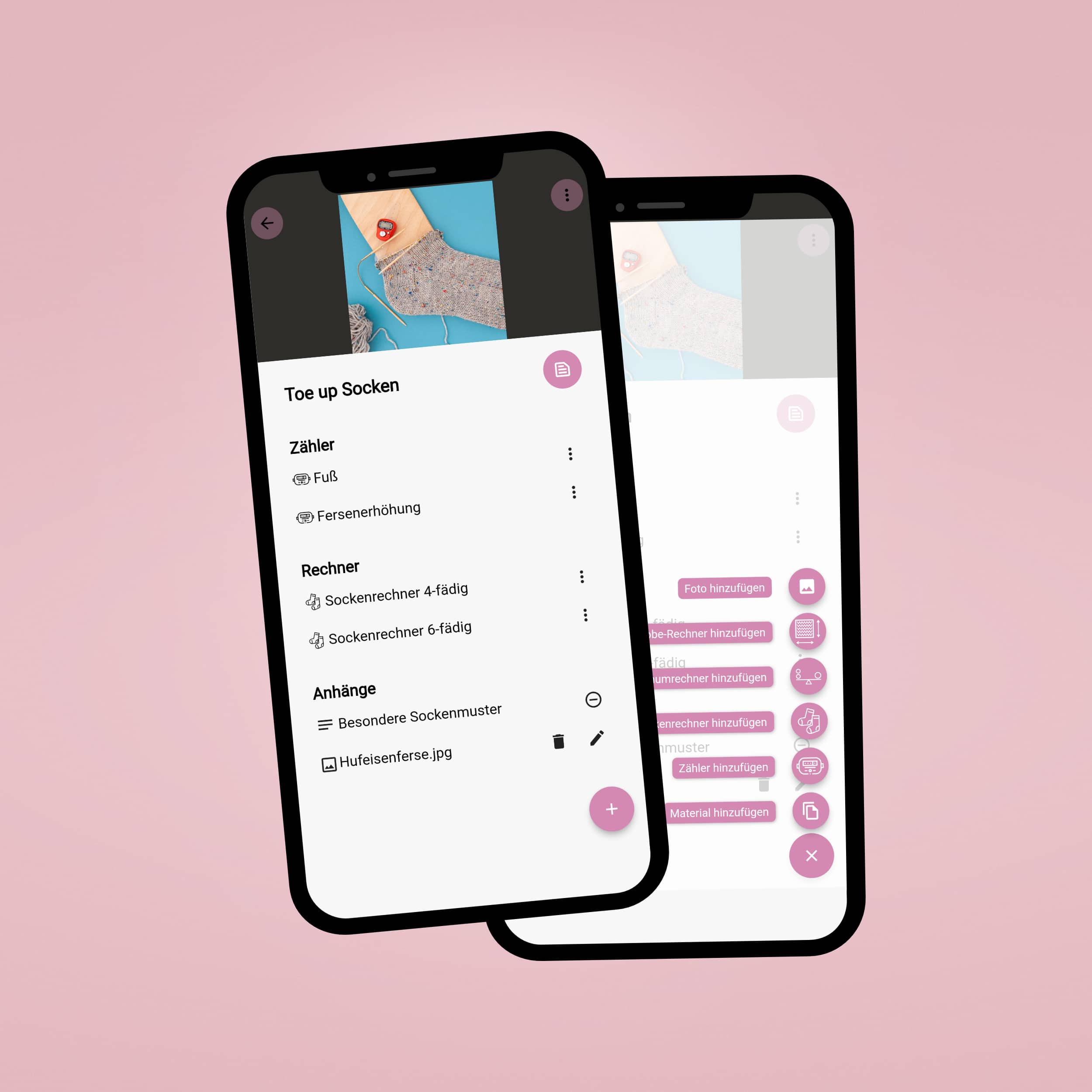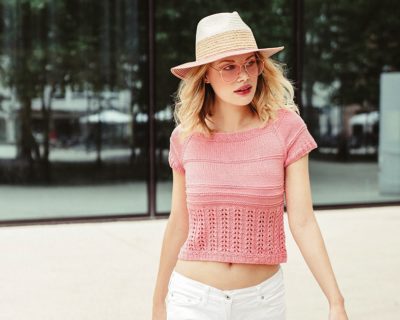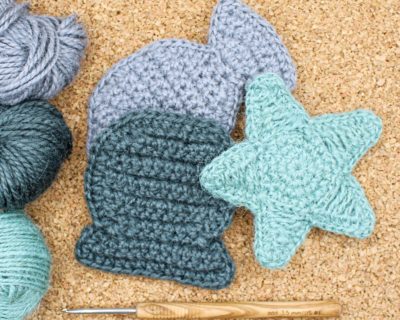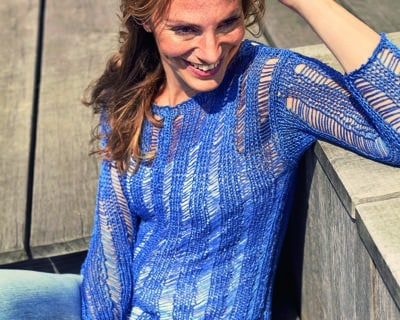Summer yarns – cool stitches for summer
There are many reasons to wear knitted and crocheted items even in summer.
Yarns of various kinds are a versatile material with a lot of positive wearing properties, even on warm days. Because of this, do not have to do without your own knitted and crocheted pieces, even in the summer.

In summer, you should pay attention to the right summer yarns and materials for your project. This way, they benefit from the air-conditioning effect of breezy materials and ensure that their favorite knitted or crocheted piece stays pleasantly cool even in hot temperatures.
But which yarn is suitable for the warm season? We asked the textile experts at Schoeller-Wolle and Austermann and give you a brief overview.
Natural or synthetic fiber?
The first question that arises when choosing the right yarn is – natural or synthetic fiber?
The good news, it works both ways! There are natural fibers will get you through the summer, as well as synthetic fibers that are wonderful for summer clothing. The synthetic fibers are often found in sportswear.
Also a mixture of both types of fiber is possible, so a combination of the best properties and the wearing comfort is increased again.
Depending on the fiber, knitting needle material should also be chosen well-fitting, so that the stitches slip well.

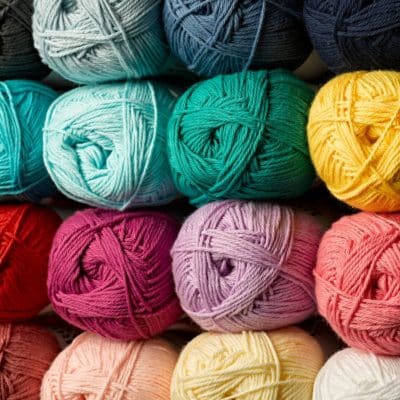
Natural or synthetic fiber?
The first question that arises when choosing the right yarn is – natural or synthetic fiber?
The good news, it works both ways! There are natural fibers will get you through the summer, as well as synthetic fibers that are wonderful for summer clothing. The synthetic fibers are often found in sportswear.
Also a mixture of both types of fiber is possible, so a combination of the best properties and the wearing comfort is increased again.
Depending on the fiber, knitting needle material should also be chosen well-fitting, so that the stitches slip well.
To give you an accurate overview of the different qualities, we will go into detail about the different materials:
Cotton – the all-rounder
Let’s start with cotton, probably the best known natural fiber for summer. Almost all of us immediately have an image of the “cotton ball plants” in mind when we think of cotton.
That cotton is so well known has its reason – almost everything can be knitted or crocheted from this fiber. What are the properties of cotton and where does it come from?
- Cotton is a mallow plant, which pop out of the capsule after flowering in a white absorbent cotton form, and then can be harvested.
- First and most important property in warm temperatures: it absorbs up to 65% of its own weight in moisture.
- Cotton is pleasant to the skin and does not scratch, due to its soft structure it nestles beautifully against your body.
- In addition, hardly any allergies are known. You can wash the cotton well, with neutral colors even boil, yet you will have long fun with the fiber, because you are very tear-resistant and durable. If you like it colorful, you are also lucky with cotton, because the material can be wonderfully dyed in great colors.
- Cotton is comparatively heavy and therefore more suitable for small works, as its own weight can cause it to unhinge and wear out when used for large works
- Washable up to 60° degrees
Often cotton is also mixed with artificial or other natural fibers, which makes its structure even finer and makes it even more elastic.
Whether you have a lot of experience and you want to try out fancy patterns or just knit plain – cotton is suitable for all patterns.
How about a crocheted bikini? No problem, with cotton you can crochet your favorite summer piece. Now we know why cotton is the best and most famous summer fiber.
The recommended needle: Depending on the treatment, cotton is sometimes rather smooth, sometimes a little duller in the surface. Our tip is therefore the addiNovel needle, a square metal needle with structure – smooth and yet not too slippery.
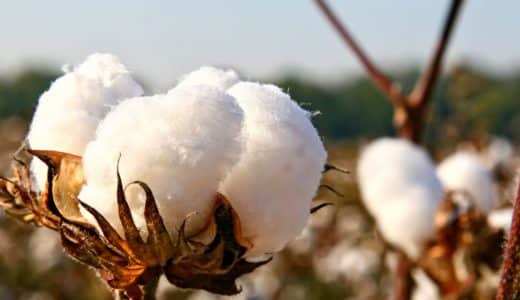
Cotton – the all-rounder
Let’s start with cotton, probably the best known natural fiber for summer. Almost all of us immediately have an image of the “cotton ball plants” in mind when we think of cotton.
That cotton is so well known has its reason – almost everything can be knitted or crocheted from this fiber. What are the properties of cotton and where does it come from?
- Cotton is a mallow plant, which pop out of the capsule after flowering in a white absorbent cotton form, and then can be harvested.
- First and most important property in warm temperatures: it absorbs up to 65% of its own weight in moisture.
- Cotton is pleasant to the skin and does not scratch, due to its soft structure it nestles beautifully against your body.
- In addition, hardly any allergies are known. You can wash the cotton well, with neutral colors even boil, yet you will have long fun with the fiber, because you are very tear-resistant and durable. If you like it colorful, you are also lucky with cotton, because the material can be wonderfully dyed in great colors.
- Cotton is comparatively heavy and therefore more suitable for small works, as its own weight can cause it to unhinge and wear out when used for large works
- Washable up to 60° degrees
Often cotton is also mixed with artificial or other natural fibers, which makes its structure even finer and makes it even more elastic.
Whether you have a lot of experience and you want to try out fancy patterns or just knit plain – cotton is suitable for all patterns.
How about a crocheted bikini? No problem, with cotton you can crochet your favorite summer piece. Now we know why cotton is the best and most famous summer fiber.
The recommended needle: Depending on the treatment, cotton is sometimes rather smooth, sometimes a little duller in the surface. Our tip is therefore the addiNovel needle, a square metal needle with structure – smooth and yet not too slippery.
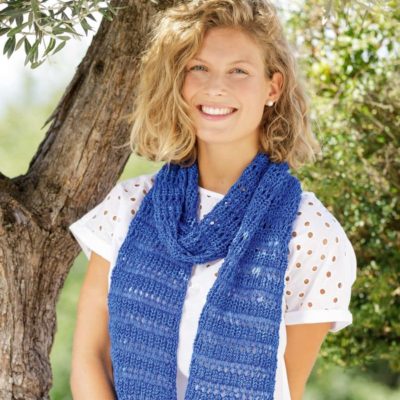
Silk – The fine for summer
Are you looking for an absolutely natural product? Then silk is a good choice. Its properties:
- Yarns with silk content are particularly pleasant and soft on the skin.
- Most often wool or cotton is mixed with a proportion of 70% and 30% silk. This combines the best properties and you get particularly high-quality clothing. The wool warms, the silk cools. At the same time it is particularly skin-friendly and gentle. Therefore, the fiber blend of wool and silk are used especially for the production of high-quality models
- Since the extraction is very complex, silk yarns are among the expensive hand knitting yarns
- Silk is a protein which always gives the wool a slightly shiny sheen
- It just takes a bit more patience when working with it, as the yarn made from silk is very thin
- You also need to be careful when washing, because silk is very fragile and unfortunately not very durable
- Washable up to 30° degrees on a gentle cycle
Let’s summarize: You can give your summer wardrobe a noble shine with silk, but you will have to dig a little deeper into your pocket and clean the fiber gently.
The recommended needle: Silk has a very firm and smooth structure and can therefore be knitted well with natural needles made of wood and bamboo. It should be knitted rather tightly so that the knitted fabric does not wear out.
That is why we recommend the addiNature olive wood needles with their fine tips.
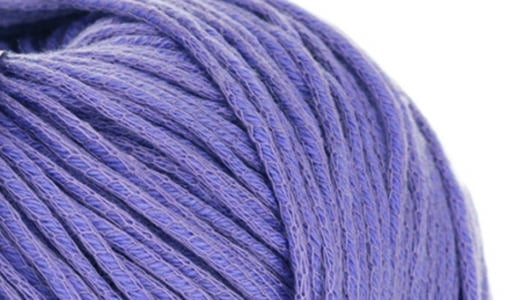
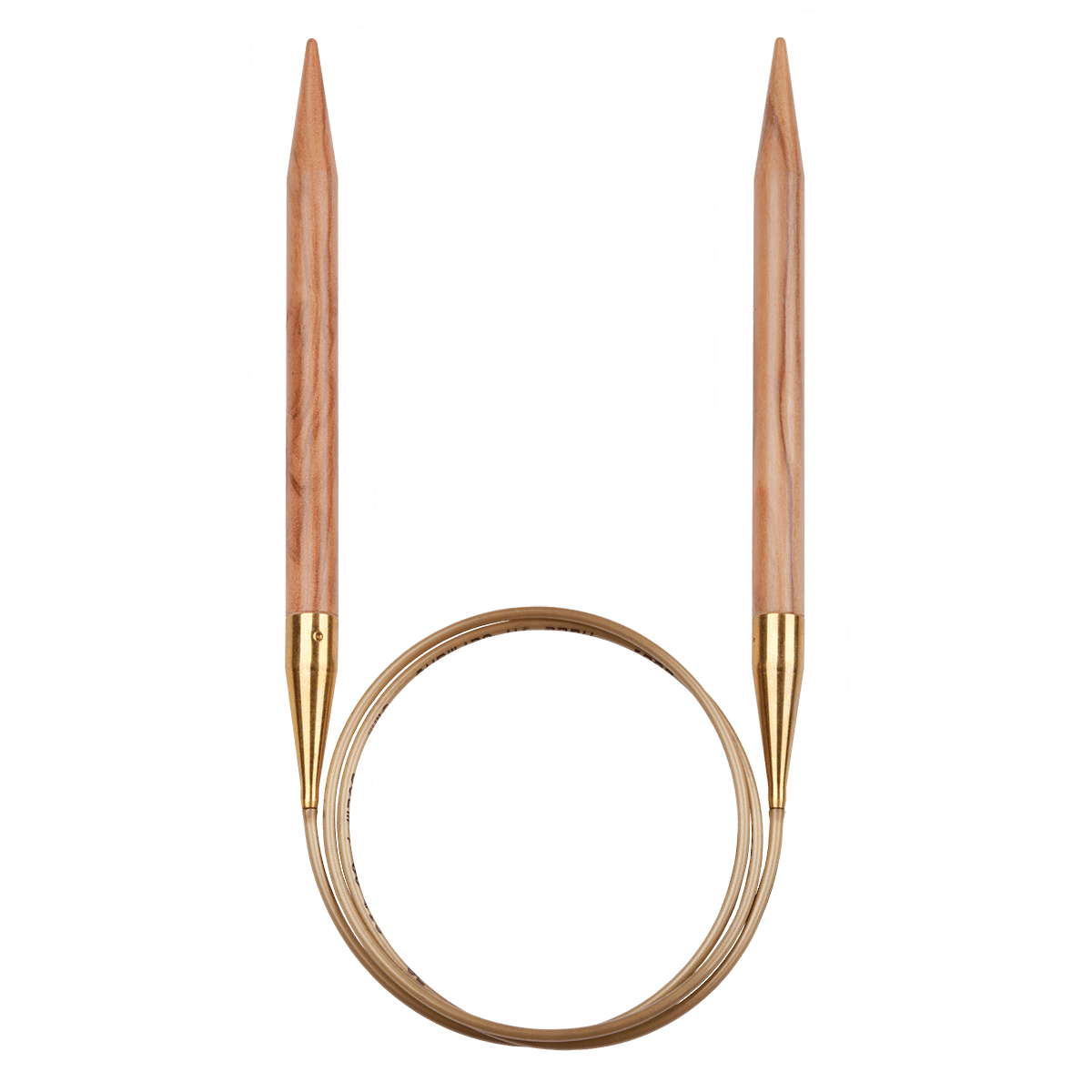
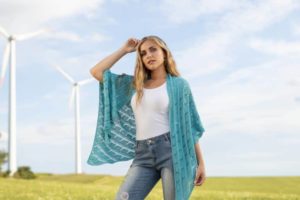
Silk – The fine for summer
Are you looking for an absolutely natural product? Then silk is a good choice. Its properties:
- Yarns with silk content are particularly pleasant and soft on the skin.
- Most often wool or cotton is mixed with a proportion of 70% and 30% silk. This combines the best properties and you get particularly high-quality clothing. The wool warms, the silk cools. At the same time it is particularly skin-friendly and gentle. Therefore, the fiber blend of wool and silk are used especially for the production of high-quality models
- Since the extraction is very complex, silk yarns are among the expensive hand knitting yarns
- Silk is a protein which always gives the wool a slightly shiny sheen
- It just takes a bit more patience when working with it, as the yarn made from silk is very thin
- You also need to be careful when washing, because silk is very fragile and unfortunately not very durable
- Washable up to 30° degrees on a gentle cycle
Let’s summarize: You can give your summer wardrobe a noble shine with silk, but you will have to dig a little deeper into your pocket and clean the fiber gently.
The recommended needle: Silk has a very firm and smooth structure and can therefore be knitted well with natural needles made of wood and bamboo. It should be knitted rather tightly so that the knitted fabric does not wear out.
That is why we recommend the addiNature olive wood needles with their fine tips.
Linen – cool through warm days
Let’s move on to another summer quality – linen. It is comfortable on the skin and cools you on warm days. Features:
- It is obtained from the flax plant and is usually proportionally processed with cotton into yarn. This makes material softer on the skin
- The flax plant requires significantly less water for its growth compared to cotton and processing requires fewer additives
- Flax fibers are very resistant to tearing, which makes linen very durable and hard-wearing.
- The fiber has a harder structure and is less stretchy
- Linen is hypoallergenic and is well suited for allergy sufferers and sensitive skin.
- Washable up to 30° degrees on a gentle cycle
Thus, linen is a nice alternative to animal fibers and very suitable for light and airy summer patterns.
The recommended needle: The slippery and rather firm yarn is best knitted with rather blunt needles. We therefore recommend bamboo or olive wood needles. To avoid piercing the fibrous structure of the yarn, we recommend the rounded basic tips of our addiNature Bamboo needles.
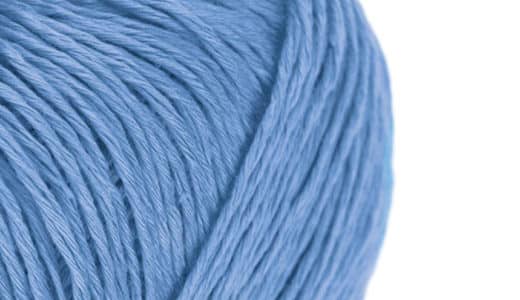
Linen – cool through warm days
Let’s move on to another summer quality – linen. It is comfortable on the skin and cools you on warm days. Features:
- It is obtained from the flax plant and is usually proportionally processed with cotton into yarn. This makes material softer on the skin
- The flax plant requires significantly less water for its growth compared to cotton and processing requires fewer additives
- Flax fibers are very resistant to tearing, which makes linen very durable and hard-wearing.
- The fiber has a harder structure and is less stretchy
- Linen is hypoallergenic and is well suited for allergy sufferers and sensitive skin.
- Washable up to 30° degrees on a gentle cycle
Thus, linen is a nice alternative to animal fibers and very suitable for light and airy summer patterns.
The recommended needle: The slippery and rather firm yarn is best knitted with rather blunt needles. We therefore recommend bamboo or olive wood needles. To avoid piercing the fibrous structure of the yarn, we recommend the rounded basic tips of our addiNature Bamboo needles.
Tencel – fine, robust and cool
A fiber that has been gaining popularity in recent years and scores with many positive properties is Tencel or Lyocell:
- Lyocell and modal fibers of the Tencel brand, produced in an environmentally conscious process from wood fibers such as beech and bamboo
- The manufacturing process uses significantly less water and chemicals than cotton
- Temperature-balancing properties and high breathability – Tencel absorbs 50% more water than cotton
- Particularly kind to the skin and suitable for people allergic to animal hair
- Tencel has a silky sheen, soft to the touch and drape. It combines properties of many other materials – a fine fiber, slightly shiny, very durable and at the same time cooling
- It does not absorb odors and can be aired out well after wearing
- Washable up to 30° degrees on a gentle cycle
A fiber that can do almost everything except keep you warm in winter. As alternatives to cotton and synthetic fibers, wood-based fibers have become more and more established in recent years. Compared to viscose, Tencel is more robust and environmentally friendly in production.
The recommended needle: The rather smooth material can be worked well with a slightly structured knitting needle. In order not to pierce the fibrous structure of the yarn, we recommend rounded basic tips like the addiUnicorn circular knitting needle.
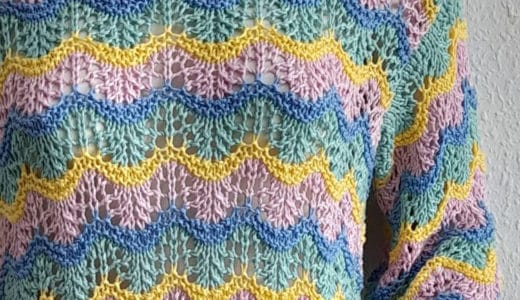
Tencel – fine, robust and cool
A fiber that has been gaining popularity in recent years and scores with many positive properties is Tencel or Lyocell:
- Lyocell and modal fibers of the Tencel brand, produced in an environmentally conscious process from wood fibers such as beech and bamboo
- The manufacturing process uses significantly less water and chemicals than cotton
- Temperature-balancing properties and high breathability – Tencel absorbs 50% more water than cotton
- Particularly kind to the skin and suitable for people allergic to animal hair
- Tencel has a silky sheen, soft to the touch and drape. It combines properties of many other materials – a fine fiber, slightly shiny, very durable and at the same time cooling
- It does not absorb odors and can be aired out well after wearing
- Washable up to 30° degrees on a gentle cycle
A fiber that can do almost everything except keep you warm in winter. As alternatives to cotton and synthetic fibers, wood-based fibers have become more and more established in recent years. Compared to viscose, Tencel is more robust and environmentally friendly in production.
The recommended needle: The rather smooth material can be worked well with a slightly structured knitting needle. In order not to pierce the fibrous structure of the yarn, we recommend rounded basic tips like the addiUnicorn circular knitting needle.
Alpaca – can summer and winter
Alpaca fiber is what most associate with warm winter wool, but the wool not only warms you in the winter, but also cools you in the summer.
Thus, alpaca wool is also an ideal summer yarn that will keep you properly dressed all day.
The wool warms you in the morning when you go out of the house and the temperatures are still fresh. In the midday heat, the quality ensures that you are pleasantly cooled and in the evening, when it gets cooler again, it provides warmth.
But how does it work?
- Alpaca fibers are thermo-insulating: this means that when it is cold, the body temperature is trapped, while when it is hot, the fibers conduct the body heat to the outside. These unique properties are needed by the animals, which live in the cool altitudes, but also in the hot steppes, to adapt to your living environment.
- The wool is very fine and long-fibered, which makes it soft and silky-shiny.
- In addition, this wool is very durable, antibacterial, antistatic and very resistant.
- It is also well tolerated by allergy sufferers.
- In addition, alpaca wool has very little pilling effect, which is why your knitted piece will stay beautiful for a long time.
- Only suitable for hand washing
Many reasons why many knitters knit socks from alpaca yarns and learn to love.
The recommended needle: As a yarn made from natural wool, alpaca has a medium fineness and can be knitted very well with many knitting needle materials, depending on preference. A classic for every project, thanks to fine point also for thin summer yarns, is our addiClassic Lace Circular Knitting Needle.
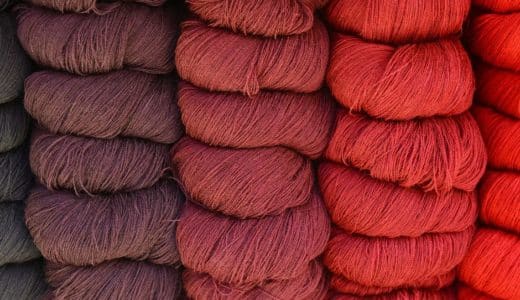
Alpaca – can summer and winter
Alpaca fiber is what most associate with warm winter wool, but the wool not only warms you in the winter, but also cools you in the summer.
Thus, alpaca wool is also an ideal summer yarn that will keep you properly dressed all day.
The wool warms you in the morning when you go out of the house and the temperatures are still fresh. In the midday heat, the quality ensures that you are pleasantly cooled and in the evening, when it gets cooler again, it provides warmth.
But how does it work?
- Alpaca fibers are thermo-insulating: this means that when it is cold, the body temperature is trapped, while when it is hot, the fibers conduct the body heat to the outside. These unique properties are needed by the animals, which live in the cool altitudes, but also in the hot steppes, to adapt to your living environment.
- The wool is very fine and long-fibered, which makes it soft and silky-shiny.
- In addition, this wool is very durable, antibacterial, antistatic and very resistant.
- It is also well tolerated by allergy sufferers.
- In addition, alpaca wool has very little pilling effect, which is why your knitted piece will stay beautiful for a long time.
- Only suitable for hand washing
Many reasons why many knitters knit socks from alpaca yarns and learn to love.
The recommended needle: As a yarn made from natural wool, alpaca has a medium fineness and can be knitted very well with many knitting needle materials, depending on preference. A classic for every project, thanks to fine point also for thin summer yarns, is our addiClassic Lace Circular Knitting Needle.
Viscose – soft and cool
As a semi-synthetic fiber, viscose combines the properties of natural raw materials with the brilliance of color and the softness of a synthetic fiber.
- A semi-synthetic fiber: viscose is derived from wood and bamboo fibers, but produced in a synthetic process using chemicals
- It has a high, long-lasting color brilliance with gentle care. Thus, viscose fibers can be dyed very well
- Viscose is smooth and soft to the touch and drape and is breathable. It does not absorb odors
- The fiber is relatively sensitive to tearing and less suitable for heavily used clothing
- It is temperature balancing and skin friendly
- Washable up to 40° degrees in gentle cycle, not suitable for tumble dryer
Viskose ist eine eher günstige Faser, mit positiven Trageeigenschaften im Sommer. Die auch als „Kunstseide“ bezeichnete Faser hat damit einige Vorteile, gerade im Vergleich zu anderen Kunstfasern. In puncto Nachhaltigkeit schneidet sie durch ihre chemische Herstellung vergleichweise schlecht ab.
The recommended needle: Depending on the treatment, a viscose blend is sometimes rather smooth, sometimes somewhat duller on the surface. Our tip is therefore the addiNovel circular knitting needle – smooth and yet not too slippery.

Viscose – soft and cool
As a semi-synthetic fiber, viscose combines the properties of natural raw materials with the brilliance of color and the softness of a synthetic fiber.
- A semi-synthetic fiber: viscose is derived from wood and bamboo fibers, but produced in a synthetic process using chemicals
- It has a high, long-lasting color brilliance with gentle care. Thus, viscose fibers can be dyed very well
- Viscose is smooth and soft to the touch and drape and is breathable. It does not absorb odors
- The fiber is relatively sensitive to tearing and less suitable for heavily used clothing
- It is temperature balancing and skin friendly
- Washable up to 40° degrees in gentle cycle, not suitable for tumble dryer
Viskose ist eine eher günstige Faser, mit positiven Trageeigenschaften im Sommer. Die auch als „Kunstseide“ bezeichnete Faser hat damit einige Vorteile, gerade im Vergleich zu anderen Kunstfasern. In puncto Nachhaltigkeit schneidet sie durch ihre chemische Herstellung vergleichweise schlecht ab.
The recommended needle: Depending on the treatment, a viscose blend is sometimes rather smooth, sometimes somewhat duller on the surface. Our tip is therefore the addiNovel circular knitting needle – smooth and yet not too slippery.
Synthetic fiber – The combination makes it
In synthetic fiber you sweat yourself to death…? True only to a certain extent.
Artificially produced fibers should not be used pure for your summer wardrobe, but you should choose a mixture with natural fibers.
In this way, you can take advantage of the properties of natural and artificial fibers and get through the summer in good shape.
- Because spandex, polyamide or polyester increase the wearing comfort and robustness and give your works the necessary support
- Synthetic yarns are usually cheaper to buy, retain their full color strength for a long time and are very versatile in their appearance
- A material mix with a portion of a natural fiber ensures that the textile remains breathable and there is no increased sweating or even heat rashes on the skin
So make sure that the percentage of synthetic fiber is not too high, then nothing speaks against synthetic fiber in the summer!
If you are knitting for babies, the proportion of synthetic fibre in the yarn should be as low as possible. Newborn babies in particular are not yet able to regulate their temperature well. If they are dressed or covered with too much synthetic fibre, it can lead to a life-threatening heat build-up.
The recommended needle: Synthetic fibers are rather difficult to push on the knitting needle, which is why we recommend a particularly smooth knitting needle made of metal here – our classic, the addiClassic circular knitting needle .
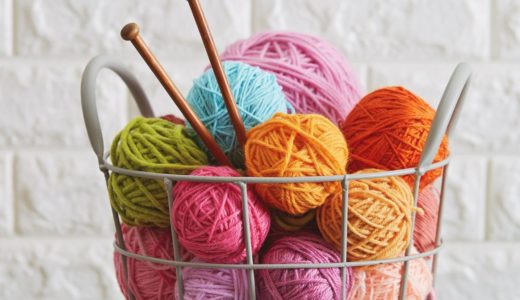
Synthetic fiber – The combination makes it
In synthetic fiber you sweat yourself to death…? True only to a certain extent.
Artificially produced fibers should not be used pure for your summer wardrobe, but you should choose a mixture with natural fibers.
In this way, you can take advantage of the properties of natural and artificial fibers and get through the summer in good shape.
- Because spandex, polyamide or polyester increase the wearing comfort and robustness and give your works the necessary support
- Synthetic yarns are usually cheaper to buy, retain their full color strength for a long time and are very versatile in their appearance
- A material mix with a portion of a natural fiber ensures that the textile remains breathable and there is no increased sweating or even heat rashes on the skin
So make sure that the percentage of synthetic fiber is not too high, then nothing speaks against synthetic fiber in the summer!
If you are knitting for babies, the proportion of synthetic fibre in the yarn should be as low as possible. Newborn babies in particular are not yet able to regulate their temperature well. If they are dressed or covered with too much synthetic fibre, it can lead to a life-threatening heat build-up.
The recommended needle: Synthetic fibers are rather difficult to push on the knitting needle, which is why we recommend a particularly smooth knitting needle made of metal here – our classic, the addiClassic circular knitting needle .
The conclusion
If you are outdoors in the summer, you need clothes that protect you from UV radiation, do not make you sweat quickly and are comfortable to wear.
These and some other properties bring the different yarn qualities with them. We hope we could give you an insight into the different qualities and give you a little inspiration for your summer wardrobe.
Yarns of the different fibers described can be found in the assortment of Austermann and Schoeller wool.
Our tip for the vacation:
Are you going on vacation or spontaneously on the road? Then download our addi2go app. Here you’ll find lots of tips, information and instructions, even when you’re on the road. The integrated row counter with voice control, sock tables and many other functions are available with one touch. With the function to create your own projects, you can also easily save your instructions as a PDF or photo on your smartphone. So you’re ready when you spontaneously discover a good wool store on your trip.



Our tip for the vacation:
Are you going on vacation or spontaneously on the road? Then download our addi2go app. Here you’ll find lots of tips, information and instructions, even when you’re on the road. The integrated row counter with voice control, sock tables and many other functions are available with one touch. With the function to create your own projects, you can also easily save your instructions as a PDF or photo on your smartphone. So you’re ready when you spontaneously discover a good wool store on your trip.
This story was produced in cooperation with Schoeller-Wolle and Austermann.
